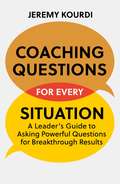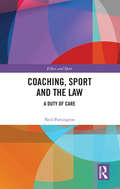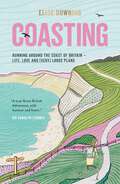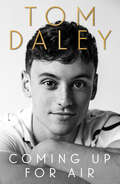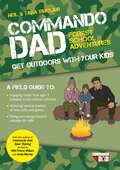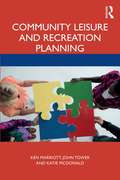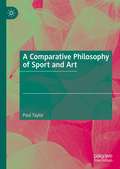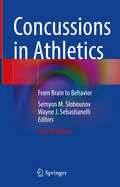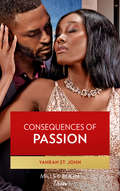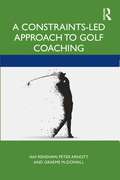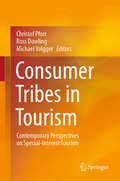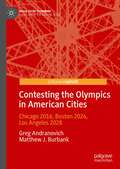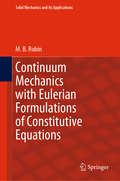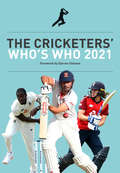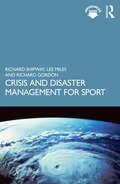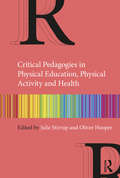- Table View
- List View
Coaching Questions for Every Situation: A Leader's Guide to Asking Powerful Questions for Breakthrough Results
by Jeremy Kourdi**Powerful coaching questions to get the best out of any situation.**In coaching, questions are the route to progress. Questions enable the people being coached to arrive at their own solutions and, crucially, to 'own' them as well. The effectiveness of this tool applies to anyone in a coaching role, whether as a leader, a professional coach, or a people management executive. A good question, asked at the right moment, can be transformative. Great questions allow coaches to influence, develop and shape someone's thinking far beyond that of their own knowledge or area of expertise, propelling the learner to new levels of insight, awareness, action and effectiveness. Coaching Questions for Every Situation delivers bags of context-specific questions to leaders and coaches right when they need them most, equipping them with the essential tools to deal with a difficult situation, raise performance or offer a moment of motivation. It includes sections on both virtual coaching and coaching across cultures.The book explains the guiding principles behind great questions as well as the pitfalls to avoid, serving as a practical guide to becoming a highly effective questioner.
Coaching, Sport and the Law: A Duty of Care (Ethics and Sport)
by Neil PartingtonThe interdependent coach-athlete relationship represents the most fundamental instance of a duty of care in sport. This book defines, analyses and clarifies the duty of care incumbent upon sports coaches and identifies important recommendations of real-world significance for coaching practice. Given the dynamic relationship between coaching, sport and the law, it is imperative that coaches have an informed awareness of the evolving legal context in which they discharge their duty of care. Detailed analysis of a coach’s duty of care has so far been lacking. The book addresses this gap by being the first to critically scrutinise the concept of duty of care in the specific context of sports coaching. Sustained analysis of the developing case law allows the scope and boundaries of the particular duties demanded of coaches to be rigorously examined. The legal principles and court decisions discussed relate to coaching delivered in a wide range of individual and team sports, at both amateur and professional levels of performance, and include common scenarios and challenges frequently encountered by sports coaches globally. By adopting an interdisciplinary approach within a broader sociolegal methodological framework, this book’s detailed analysis and original insights will prove highly instructive for practising coaches, coach educators, and national governing bodies of sport. It also offers extremely valuable insights for students, teachers and practitioners involved in sports law, sports coaching, sports ethics, tort law, sports policy and development, sports studies and physical education.
Coaching, Sport and the Law: A Duty of Care (Ethics and Sport)
by Neil PartingtonThe interdependent coach-athlete relationship represents the most fundamental instance of a duty of care in sport. This book defines, analyses and clarifies the duty of care incumbent upon sports coaches and identifies important recommendations of real-world significance for coaching practice. Given the dynamic relationship between coaching, sport and the law, it is imperative that coaches have an informed awareness of the evolving legal context in which they discharge their duty of care. Detailed analysis of a coach’s duty of care has so far been lacking. The book addresses this gap by being the first to critically scrutinise the concept of duty of care in the specific context of sports coaching. Sustained analysis of the developing case law allows the scope and boundaries of the particular duties demanded of coaches to be rigorously examined. The legal principles and court decisions discussed relate to coaching delivered in a wide range of individual and team sports, at both amateur and professional levels of performance, and include common scenarios and challenges frequently encountered by sports coaches globally. By adopting an interdisciplinary approach within a broader sociolegal methodological framework, this book’s detailed analysis and original insights will prove highly instructive for practising coaches, coach educators, and national governing bodies of sport. It also offers extremely valuable insights for students, teachers and practitioners involved in sports law, sports coaching, sports ethics, tort law, sports policy and development, sports studies and physical education.
Coasting: Running Around the Coast of Britain – Life, Love and (Very) Loose Plans
by Elise DowningElise had a new job, flat and relationship – and they were all making her utterly miserable. Then the obvious solution hit her: run 5,000 miles around the coast of Britain. Over the next 301 days, she saw Britain at its most wild and wonderful, and discovered that running away doesn’t solve your problems – but it's more fun than dealing with them.
Coming Up for Air: What I Learned From Sport, Fame And Fatherhood
by Tom DaleyA deeply personal and inspiring memoir from one of the most celebrated and influential names in British sport.
Commando Dad: Get Outdoors with Your Kids
by Neil Sinclair Tara SinclairThis fully illustrated field guide is loaded with dozens of activities, games and crafts for you and your troops to enjoy in the great outdoors, from forest skills to creative pursuits. These mission briefs are expertly designed to make sure your squad learns valuable skills, stays safe and has a lot of fun. Suitable for ages 3 to 13.
Common Pediatric Knee Injuries: Best Practices in Evaluation and Management
by Nailah ColemanThis book is designed as a practical and quick reference guide on the evaluation and management of common pediatric knee injuries for those who provide clinical care to children and adolescents, including pediatricians, family practitioners, pediatric nurse practitioners, and trainees in these fields. It focuses on the important findings on evaluation and considerations for management of common knee injuries and is arranged in three general sections, as follows: general evaluation of the pediatric knee, specific injuries in the pediatric knee and injury prevention. Concise and practical, this book adds and improves on current academic offerings in the field, while providing an easy-to-read reference for both common and concerning pediatric knee issues. It contains cases to aid understanding, as well as helpful pearls and pitfalls along with a chapter summary for each condition. All chapters are structured in a similar way to ensure that this remains a well-organized quick resource for the clinician in a hurry. This book appeals to the pediatrician, and the sports medicine specialist alike, interesting all clinicians that work with the pediatric athlete and with pediatric knee injuries.
Community Leisure and Recreation Planning
by Ken Marriott John Tower Katie McDonaldCommunity Leisure and Recreation Planning offers an up-to-date, evidence-based approach to planning community leisure and recreation facilities, programs and services. It introduces readers to key theory and best practice in the planning of effective leisure and recreation projects. The book defines planning, leisure, recreation and other key concepts and explains why a thorough planning process is essential to achieving effective outcomes. It presents a comprehensive, integrative four phase model for undertaking leisure and recreation planning, including: pre-planning, planning research, preparing a plan, and implementing, monitoring and evaluating the outputs and outcomes of a plan. It provides a conceptual rationale for each component of the planning process, a detailed explanation of the tools and techniques that can be used, and extensive examples and international case study materials to demonstrate their use. The principles and techniques explained in the book are applicable at a range of community levels from small individual sites to regions, states and even countries. This is an essential course text for all leisure and recreation courses, and invaluable reading for academics, practitioners, stakeholders and students working in leisure and recreation planning, events, culture and sport.
Community Leisure and Recreation Planning
by Ken Marriott John Tower Katie McDonaldCommunity Leisure and Recreation Planning offers an up-to-date, evidence-based approach to planning community leisure and recreation facilities, programs and services. It introduces readers to key theory and best practice in the planning of effective leisure and recreation projects. The book defines planning, leisure, recreation and other key concepts and explains why a thorough planning process is essential to achieving effective outcomes. It presents a comprehensive, integrative four phase model for undertaking leisure and recreation planning, including: pre-planning, planning research, preparing a plan, and implementing, monitoring and evaluating the outputs and outcomes of a plan. It provides a conceptual rationale for each component of the planning process, a detailed explanation of the tools and techniques that can be used, and extensive examples and international case study materials to demonstrate their use. The principles and techniques explained in the book are applicable at a range of community levels from small individual sites to regions, states and even countries. This is an essential course text for all leisure and recreation courses, and invaluable reading for academics, practitioners, stakeholders and students working in leisure and recreation planning, events, culture and sport.
A Comparative Philosophy of Sport and Art
by Paul TaylorThis book compares two major leisure activities – watching sport and engaging with art. It explores a range of philosophical questions that arise when sport and art are placed side by side:The works of Shakespeare, Rembrandt and Mozart have continued to fill playhouses, galleries and concert halls for centuries since they were created, while our interest in even the most epic sporting contests fades after just a few years, or even a single season. What explains this difference?Sporting contests are merely games. So why do sports fans attach such great importance to whether their team wins or loses?Do sporting contests have meaning in the way works of art do?Beauty is a central value in art. Is it important in sport?What role does morality play in sport and art?What value do sport and art contribute to the world and to the meaning of people’s lives?
The Complete Yachtmaster: Sailing, Seamanship and Navigation for the Modern Yacht Skipper 10th edition
by Tom CunliffeThe Complete Yachtmaster has been a bestseller since first publication and has established itself as the standard reference for Yachtmaster students as well as skippers of all levels of experience.In this fully revised and up-to-date 10th edition, Tom Cunliffe brings together all the essentials of modern cruising in one volume. He presents an analysis of a good skipper, the theory and practice of sailing and sail trim, the art of seamanship, accurate navigation including chart plotters and PCs, understanding meteorology, heavy weather preparation, understanding yacht stability and coping with emergencies.The Complete Yachtmaster builds knowledge as it builds sailing confidence, guiding examination candidates as authoritatively and reassuringly through the RYA syllabus as a sea pilot bringing a ship safely to harbour. Required reading for all skippers and budding skippers, both on board or in the classroom.'A gem, distilled from decades of experience' Yachting Monthly'Cunliffe's competence and authority radiate from the pages... thoroughly recommended' Little Ship Club'There are all too few authors who not only know their subject but can write well about it. Tom Cunliffe is one' Cruising
Complications in Orthopaedics: Sports Medicine E-Book
by Stephen R. ThompsonOne of the hallmarks of a master surgeon is the ability to navigate a wide variety of inevitable difficult situations in surgery, whether errors in judgment, technical mistakes, or unavoidable outcomes. Complications in Orthopaedic Surgery is a new series designed to provide real-world guidance on recognizing and avoiding errors, as well as how to “course-correct" during surgery. In this inaugural volume dedicated to sports medicine surgery, series editor Dr. Stephen R. Thompson and Dr. Matthew Schmitz describe and demonstrate practical solutions that are integral to improving patient outcomes.Covers a wide variety of procedures, including meniscus repair and transplantation, revision ACL reconstruction, pediatric ACL surgery, cartilage surgery in adults and children, knee osteotomies, acromioclavicular surgery, hip arthroscopy, and much more. Describes and offers solutions to the most common or most devastating errors and complications in the practice of sports medicine surgery, combining the breadth of knowledge of academicsurgeons with the in-the-trenches skills of community surgeons. Uses an easy-to-follow, standardized chapter format that covers preoperative errors, intraoperative issues, and postoperative complications. Includes procedural video clips to reinforce discussions in the text. Features a full-color design with numerous photographs, radiographs, and illustrations.
Concussion Management for Wheelchair Athletes: Evaluation and Examination
by Kenneth Lee Michael William Harper Michael Joseph Uihlein Michael McCreaThis book arises from the challenges and difficulties involved in the evaluation and management of concussions in wheelchair athletes. Concussions are most readily identified in the ambulatory population via identifying gross motor instability or when athletes lose their balance and stumble after a blow to the head or neck region. Because wheelchair athletes participate in sport while sitting down and using a wheelchair, clinicians must be extra attentive to identify a potential concussion. Once a potential concussion is identified, there are many challenges in evaluation of the wheelchair athlete population due to their comorbidities. At baseline, they may have signs and symptoms that mimic a concussion, and their impairments can also alter their cognitive and balance assessments. Therefore, it is critical to make a distinction between these athletes’ baseline comorbid impairments and potential new exam findings in a concussion. Filling in a critical gap in the literature, this is a concise pocket guide for any clinician, trainer, or rehabilitation specialist who is involved in wheelchair sports. It focuses on the unique challenges in evaluating a concussion in the wheelchair athlete, including baseline testing, the process of evaluating the signs and symptoms of a concussion, cognitive and vestibular examination, new clinical techniques specific to wheelchair athletes, and the return to play process. A Concussion Management Program (CMP) for use on the sideline as well as in the office is included. Practical and timely, Concussion Management for Wheelchair Athletes is a valuable resource to increase awareness, provide guidance on the unique challenges within this population, and generate interest in future research and investigation.
Concussions in Athletics: From Brain to Behavior
by Semyon M. Slobounov Wayne J. SebastianelliNow in a fully revised and expanded second edition, this comprehensive text remains a timely and major contribution to the literature that addresses the neuromechanisms, predispositions, and latest developments in the evaluation and management of concussive injuries. Concussion, also known as mild traumatic brain injury, continues to be a significant public health concern with increased attention focusing on treatment and management of this puzzling epidemic as well as controversies within the field. The book is comprised of five thematic sections: current developments in evaluation; biomechanical mechanisms; neural substrates, biomarkers, genetics and brain imaging; pediatric considerations; and clinical management and rehabilitation. Since the publication of the original edition in 2014, much has changed regarding the current understanding of mild traumatic brain injury including development of more precise imaging modalities, development and classification of new biomarkers, and updates to clinical treatment and management of athletic concussion. This new edition will include new chapters targeting the influence of genetics on concussive injury, as well as an expansion on the knowledge of pediatric response to concussion and the influence of repetitive subconcussive impacts on athlete health. An invaluable contribution to the literature, Concussions in Athletics: From Brain to Behavior reestablishes itself as a state-of-the-art reference that will be of significant interest to a wide range of clinicians, researchers, administrators, and policy makers, and this updated version aims to narrow the gap between research findings and clinical management of sports-related concussion and other mild traumatic brain injury. The second edition also attempts to broaden the scope of the knowledge to apply to more professionals and pre-professionals in the fields of neuroscience, neuropsychology, and other allied health professionals that closely work with athletes and sports medicine professionals.
Consequences Of Passion: A Sensual Pregnancy Romance (Locketts of Tuxedo Park #1)
by Yahrah St. JohnWhen a winning bachelor bid leads to unexpected consequences…
A Constraints-Led Approach to Golf Coaching (Routledge Studies in Constraints-Based Methodologies in Sport)
by Ian Renshaw Peter Arnott Graeme McDowallWhile the popularity of golf is coming under increased pressure, it continues to hook millions of players. However, the complexity of the game and the extremely high level of precision required to hit the ball consistently well means that it is a game that is difficult to even become ‘good’ at, let alone master. Consequently, irrespective of whether the player is a weekend golfer, a club member, or a tour professional, the search for the key to playing good golf feeds an insatiable desire for ideas and tips to improve golf performance and bring one’s handicap down. However, traditional coaching, with its primary focus on developing the perfect swing is not leading to a reduction in handicaps and the time is ripe for a new approach. This book aims to fill this void and is a landmark text for golf coaches and players about applying a constraints-led approach (CLA) to golf coaching. In this book, two golf coaches, Pete Arnott and Graeme McDowall talk to Ian Renshaw to demonstrate how their practice is driven and inspired by their alignment to a CLA. A Constraints-Led Approach to Golf Coaching includes case studies and examples of how constraints are manipulated to induce adaption in the technical, tactical (or put in golf terms, course management), physiological, and psychological development mechanisms needed to improve at golf. Examples cover coaching from their work with beginners, high handicappers, aspirant tour players, and elite players looking to make the ‘tour’.
A Constraints-Led Approach to Golf Coaching (Routledge Studies in Constraints-Based Methodologies in Sport)
by Ian Renshaw Peter Arnott Graeme McDowallWhile the popularity of golf is coming under increased pressure, it continues to hook millions of players. However, the complexity of the game and the extremely high level of precision required to hit the ball consistently well means that it is a game that is difficult to even become ‘good’ at, let alone master. Consequently, irrespective of whether the player is a weekend golfer, a club member, or a tour professional, the search for the key to playing good golf feeds an insatiable desire for ideas and tips to improve golf performance and bring one’s handicap down. However, traditional coaching, with its primary focus on developing the perfect swing is not leading to a reduction in handicaps and the time is ripe for a new approach. This book aims to fill this void and is a landmark text for golf coaches and players about applying a constraints-led approach (CLA) to golf coaching. In this book, two golf coaches, Pete Arnott and Graeme McDowall talk to Ian Renshaw to demonstrate how their practice is driven and inspired by their alignment to a CLA. A Constraints-Led Approach to Golf Coaching includes case studies and examples of how constraints are manipulated to induce adaption in the technical, tactical (or put in golf terms, course management), physiological, and psychological development mechanisms needed to improve at golf. Examples cover coaching from their work with beginners, high handicappers, aspirant tour players, and elite players looking to make the ‘tour’.
Consumer Tribes in Tourism: Contemporary Perspectives on Special-Interest Tourism
by Christof Pforr Ross Dowling Michael VolggerThis book adopts a collectivist perspective on special interest tourism consumption, bringing together research on ‘special interest tourism’ and ‘niche tourism’ as well as more recent research into the interdisciplinary applications of the sociological concept of neo‐tribes. It promotes a shift in perspective away from special interest tourism understood as a sum of similarly motivated individuals, to a collective view of special interest tourists who share common characteristics (e.g., shared values, beliefs and mutual interests) and group structures. This approach provides a better understanding of groupings that are not unified by a common tourism motivation, but brought together by otherwise conditioned commonalities in actual behavior triggered by supply-side contexts (e.g., Airbnb). The book considers tourism micro‐segments as consumer tribes (i.e., as symbolic communities) in which individuals are embedded and loosely bound together.As there is limited research on the collectivist perspective on special interest tourism consumption, in the first part the book’s conceptual/theoretical discourse contributes to a better understanding of ‘groupings’ in tourism behavior but also collectives that are not unified by a common tourism motivation. Presenting international examples, the book explores in Part 2 the group culture of a range of tourist tribes by describing emerging tourism micro-segments, identifying shared identities, and analyzing their collective mechanisms.
Contesting the Olympics in American Cities: Chicago 2016, Boston 2024, Los Angeles 2028 (Mega Event Planning)
by Greg Andranovich Matthew J. BurbankThis book examines the changing nature of opposition to bidding for and hosting the Olympic Games in contemporary American cities. It explores and critiques the process by which cities bid for the Olympics in the current context of the International Olympic Committee’s changing bid requirements and from the social justice perspectives of Olympics opponents. Using detailed case studies of the Olympic bids in Chicago, Boston, and Los Angeles, it shows how opposition to bidding for and hosting the Olympics has changed dramatically in American cities.
Continuum Mechanics with Eulerian Formulations of Constitutive Equations (Solid Mechanics and Its Applications #265)
by M.B. RubinThis book focuses on the need for an Eulerian formulation of constitutive equations. After introducing tensor analysis using both index and direct notation, nonlinear kinematics of continua is presented. The balance laws of the purely mechanical theory are discussed along with restrictions on constitutive equations due to superposed rigid body motion. The balance laws of the thermomechanical theory are discussed and specific constitutive equations are presented for: hyperelastic materials; elastic–inelastic materials; thermoelastic–inelastic materials with application to shock waves; thermoelastic–inelastic porous materials; and thermoelastic–inelastic growing biological tissues.
The Cricketers' Who's Who 2021
by Darren StevensThe Cricketers’ Who’s Who 2021 is the essential guide to the new cricket season and is the must-read and much-loved accompaniment for anyone interested in the English game.The 42nd edition tells you all you need to know about every player from all 18 counties, as well as the contracted women’s players.More than 400 players have answered questions ranging from the star players of the future to the hottest debates within the dressing room, giving readers a unique insight into everyone who will be competing this summer, from emerging youngsters to established England stars such as Jos Buttler, Ben Stokes and Jofra Archer.This year’s foreword comes courtesy of Kent legend Darren Stevens, the epitome of a county cricketer.The cherished reference book includes a thorough statistics section for every player and all counties, as well as profiles of the head coaches, and a review of how each county did last summer and how they’re shaping up for 2021.The pages ofThe Cricketers’ Who’s Who 2021 reveal the interesting, insightful, sometimes hilarious and often off-the-wall world of English cricket.
Crisis and Disaster Management for Sport
by Richard Shipway Lee Miles Richard GordonCrisis and Disaster Management for Sport is the first book to introduce key concepts and best practice in crisis and disaster management in sport and international sports events. The book draws from multiple disciplines to provide insight into the issues and challenges involved in planning for, and managing, crises and disasters in the context of sport. With an initial focus on sports event and venue resilience, the book also explores social, community and individual resilience within sport and examines concepts and issues such as fandom, risk perception, crowd control and management, crisis communication and reputational risk and the growing challenges posed by climate change. The book includes real-world case studies as well as disaster management-related simulation and scenario-building exercises and looks ahead to what might be the most significant threats in future to the safe and sustainable management of sport. With the devastating impacts of COVID-19 illustrating the central importance of resilience and proper preparation for crises and disasters, this book is an essential read for all researchers, students, practitioners and policy-makers working in sport, tourism, entertainment, leisure and critical event studies.
Crisis and Disaster Management for Sport
by Richard Shipway Lee Miles Richard GordonCrisis and Disaster Management for Sport is the first book to introduce key concepts and best practice in crisis and disaster management in sport and international sports events. The book draws from multiple disciplines to provide insight into the issues and challenges involved in planning for, and managing, crises and disasters in the context of sport. With an initial focus on sports event and venue resilience, the book also explores social, community and individual resilience within sport and examines concepts and issues such as fandom, risk perception, crowd control and management, crisis communication and reputational risk and the growing challenges posed by climate change. The book includes real-world case studies as well as disaster management-related simulation and scenario-building exercises and looks ahead to what might be the most significant threats in future to the safe and sustainable management of sport. With the devastating impacts of COVID-19 illustrating the central importance of resilience and proper preparation for crises and disasters, this book is an essential read for all researchers, students, practitioners and policy-makers working in sport, tourism, entertainment, leisure and critical event studies.
Critical Pedagogies in Physical Education, Physical Activity and Health
by Julie Stirrup Oliver HooperCritical Pedagogies in Physical Education, Physical Activity and Health explores critical pedagogy – and critical work around the body, health and physical activity – within physical education. By examining the complex relationships between policies and practice, and how these are experienced by young people, it elucidates the need for critical pedagogy in contemporary times. With contributions from leading international experts in health and physical education, and underpinned by a critical, socio-cultural approach, the book examines how health and physical education are situated across various international contexts and the influence of policy and curriculum. It explores how health is constructed by students and teachers within these contexts as well as how wider spaces and places beyond formal schooling influence learning around the body, health and physical activity. Finally, it considers what progressive pedagogies might ‘look like’ within health and physical education. Chapters utilise empirical work within the field to explore various topics of relevance to critical pedagogy, drawing on theoretical insights while providing practical applications and concluding with reflection points to encourage readers to consider the relevance for their own contexts. Designed to support pedagogical study in a range of contexts, this book will be of particular interest to undergraduate and postgraduate students, teachers and researchers with an interest in physical education, physical activity and health and the role they play in young people’s lives.
Critical Pedagogies in Physical Education, Physical Activity and Health
by Julie Stirrup Oliver HooperCritical Pedagogies in Physical Education, Physical Activity and Health explores critical pedagogy – and critical work around the body, health and physical activity – within physical education. By examining the complex relationships between policies and practice, and how these are experienced by young people, it elucidates the need for critical pedagogy in contemporary times. With contributions from leading international experts in health and physical education, and underpinned by a critical, socio-cultural approach, the book examines how health and physical education are situated across various international contexts and the influence of policy and curriculum. It explores how health is constructed by students and teachers within these contexts as well as how wider spaces and places beyond formal schooling influence learning around the body, health and physical activity. Finally, it considers what progressive pedagogies might ‘look like’ within health and physical education. Chapters utilise empirical work within the field to explore various topics of relevance to critical pedagogy, drawing on theoretical insights while providing practical applications and concluding with reflection points to encourage readers to consider the relevance for their own contexts. Designed to support pedagogical study in a range of contexts, this book will be of particular interest to undergraduate and postgraduate students, teachers and researchers with an interest in physical education, physical activity and health and the role they play in young people’s lives.
